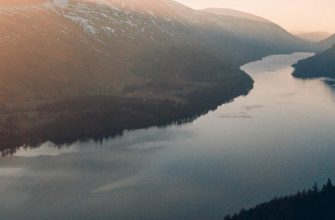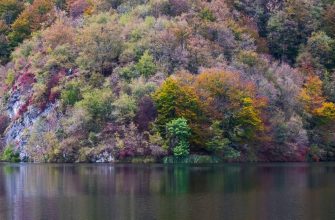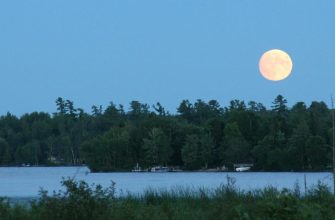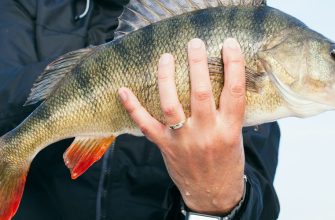- Understanding Bass Fishing
- Bass Behavior and Habits
- Bass Angling Techniques: Mastering the Basics
- Tips for a Successful Catch Bass:
- What Makes a Good Bass Fishing Lake?
- Ideal Water Conditions for Bass: Factors to Consider
- Structure and Cover: Creating the Perfect Habitat for Bass
- Forage Availability: Key to a Thriving Bass Population
- Bass-Friendly Vegetation: Enhancing Your Fishing Experience
- 15 of the Best Bass Fishing Lakes in the US
- 1. Lake Champlain, NY-VT-QUE
- Overview
- Bass Types
- Best Seasons for Bass Catching
- 2. Sam Rayburn Reservoir, TX
- Overview
- Bass Types
- Best Seasons for Bass Catching
- 3. Clear Lake, CA
- Overview
- Bass Types
- Best Seasons for Bass Catching
- 4. Lake Guntersville, AL
- Overview
- Bass Types
- Best Seasons for Bass Catching
- 5. Mille Lacs, MN
- Overview
- Bass Types
- Best Seasons for Bass Catching
- 6. Lake Okeechobee, FL
- Overview
- Bass Types
- Best Seasons for Bass Catching
- 7. Lake Erie, OH-PA-NY-MI
- Overview
- Bass Types
- Best Seasons for Bass Catching
- 8. Lake Fork, TX
- Overview
- Bass Types
- Best Seasons for Bass Catching
- 9. Toledo Bend, TX-LA
- Overview
- Bass Types
- Best Seasons for Bass Catching
- 10. California Delta, CA
- Overview
- Bass Types
- Best Seasons for Bass Catching
- 11. Santee-Cooper, SC
- Overview
- Bass Types
- Best Seasons for Bass Catching
- 12. Lake Arrowhead, GA
- Overview
- Bass Types
- Best Seasons for Bass Catching
- 13. Fellsmere Reservoir, FL
- Overview
- Bass Types
- Best Seasons
- 14. Bull Shoals Lake, AR/MI
- Overview
- Bass Types
- Best Seasons
- 15. Chickamauga, TN
- Overview
- Bass Types
- Best Seasons
- How to Pick the Best Bass Lake in the USA
- Understanding Different Bass Species and Their Preferences
- Researching Popular Bass Fishing Lakes in the US
- Evaluating Factors for Lake Selection
- Considering Local Regulations and Accessibilities
- Choosing the Right Bass Fishing Rods and Gear
- Rod Selection Guide: Finding the Perfect Bass Fishing Rod
- Reel Options for Bass Fishing: Choosing the Right Type
- Essential Gear for Bass Angling: Tackle, Baits and Accessories
- Maintenance and Care: Keeping Your Bass Fishing Gear in Top Shape
- Concluding Remarks
- FAQs
- Q: What types of fish can I catch while lake fishing?
- Q: Are bass fishing lakes in the US good for catching bigger fish?
- Q: What are some effective fishing techniques for lake fishing?
- Q: Can I catch bass in every lake in the US?
- Q: What are some factors to consider when choosing a lake for bass angling?
- Q: Are there any specific lakes renowned for bass angling in the US?
- Q: Is it important to follow regulations when fishing in these lakes?
- Q: What are some recommended techniques for catching big bass in lakes?
- Q: How can I find the best fishing destinations in the US?
- Q: What is the average size of lakes suitable for bass angling?
Are you ready to embark on an exhilarating journey into the world of lake fishing for big bass? The thrill of catching a trophy-sized bass, feeling the adrenaline rush as it hits your lure, and the anticipation of catching the fish of a lifetime – it’s an experience like no other.
In this article, we will guide you through the top 15 bass fishing lakes in the United States, where you can find some of the most sought-after bass types. Whether you’re an experienced fishing enthusiast or a novice, the information presented here will help you choose the perfect lake for your bass-angling adventure.
Exploring the vast and diverse landscapes of America’s lakes, you’ll discover hidden gems that boast incredible bass fisheries. From the dense grassy shores of Texas to the tranquil boat lanes of Chickamauga Lake, each angling locale offers its unique charm and promises unforgettable fishing experiences.

As you navigate through this article, you’ll learn about the best lakes for bass angling, tips on how to target them, and the tactics that yield the best results. Whether you prefer to cast a frog near a dock, use lures to entice strikes or employ jerk lures with precision pauses, we have you covered.
Our information is carefully curated from reliable sources, including well-known fishing websites and publications. We have scoured the internet, analyzing data from experts and fishing enthusiasts alike, to bring you the most accurate and up-to-date information on America’s top bass-angling lakes.
So, if you’re ready to embark on an exciting bass-angling adventure, dive into the following sections of this article. Discover the hidden secrets of each lake, uncover the state records, and find the perfect spot to catch that fish of a lifetime. Let’s get started!
Understanding Bass Fishing
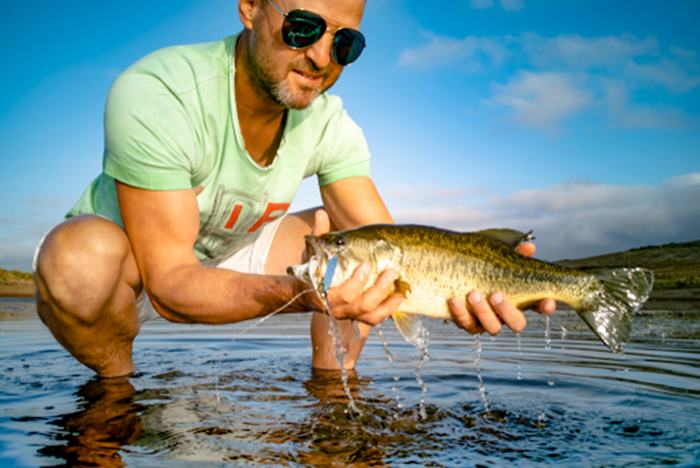
Bass Behavior and Habits
Bass are known for their unique behavior and habits, which can vary depending on the lake and the environment they inhabit. Understanding these behaviors is crucial for successful bass angling.
Bass are often found near spots such as rocks, fallen trees, or submerged greenery. They use these spots as hiding spots and to ambush their prey. When fishing for bass, it’s important to target these areas as they are likely to hold a good number of bass.
Furthermore, bass tends to be more active during certain times of the day. They are known to feed more aggressively during early morning and late evening hours. However, they can also be caught throughout the day, especially in areas with low light conditions or when the weather is overcast.
Bass Angling Techniques: Mastering the Basics
To become skilled in bass fishing, it’s crucial to master the fundamental methods that have proven to be effective. Here are some techniques that every angler should be familiar with:
- Casting and Retrieving: This is the most basic technique in bass fishing. Throw your hook near spots or areas where bass are likely to hide and retrieve it back at a steady pace. Experiment with different retrieval speeds to find what works best for the current conditions.
- Topwater Fishing: Topwater attractants can be incredibly effective for enticing bass to strike. These attractants imitate insects or small creatures on the surface and can trigger aggressive reactions from the bass. Throw them near greenery or any other spots where bass might be lurking.
- Jigging: Jigging involves using a jig attractant that mimics a crawfish or other bottom-dwelling prey. Throw your jig near the structure, let it sink to the bottom, and then use short, sharp jerks of the rod to imitate the movement of prey. This technique can be highly effective when bass are in a more sluggish mood.
- Spinnerbaits: Spinnerbaits are versatile attractants that can be used in a variety of situations. They consist of a metal blade that spins as you retrieve the attractant, creating flash and vibrations that attract bass. Use spinnerbaits near shallow cover or in open water to entice strikes.
Tips for a Successful Catch Bass:
Here are some tips to increase your chances of a successful bass catch:
- Research the Best Bass Fishing Spots: Before heading out, do some research on the best bass fishing spots in your area or the specific lake you plan to fish.
- Choose the Right Hook: Bass can be picky eaters, so it’s essential to choose the appropriate hook for the conditions and the behavior of the bass. Research the local bass types and their preferred prey to select the most effective hook.
- Pay Attention to Body Temperature: Bass are cold-blooded, and their activity levels are influenced by body temperature. In colder temperatures, they tend to be less active and may require a slower presentation. As the temperature warms up, bass becomes more active and may be more receptive to faster-moving hooks.
- Experiment with Different Techniques: Bass fishing is not an exact science, and what works one day may not work the next. Be willing to experiment with different techniques, hooks, and retrieval speeds to find what the bass are responding to on a particular day.
What Makes a Good Bass Fishing Lake?
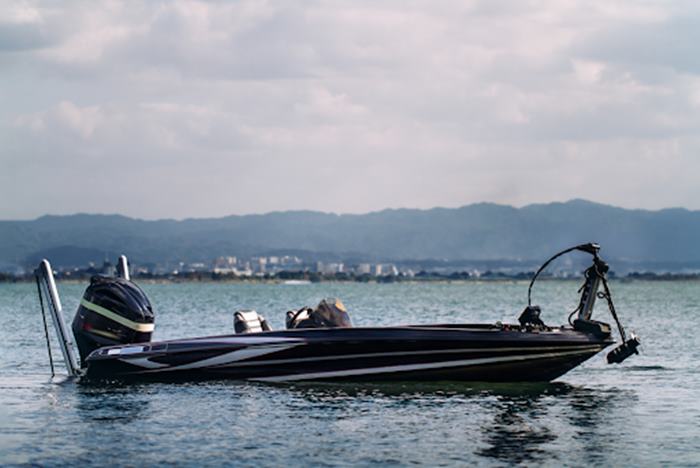
Ideal Water Conditions for Bass: Factors to Consider
When it comes to bass angling, the conditions of the environment play a crucial role in determining the success of your fishing expedition. To find a good bass angling lake, consider the following factors:
- Temperature: Bass thrives in temperatures ranging from 60 to 75 degrees Fahrenheit. Look for lakes with temperatures within this range for optimal bass activity.
- Oxygen Levels: Adequate oxygen levels are essential for the survival and growth of bass. Lakes with good circulation and minimal pollution tend to have higher oxygen levels, creating a favorable environment for bass.
- pH Levels: Bass prefers neutral to slightly acidic conditions with a pH range of 6.5 to 7.5. Avoid lakes with extreme pH levels, as they may not support a healthy bass population.
- Clarity: Bass rely on their vision to locate prey, so clear conditions are preferred. Look for lakes with good clarity, as it increases visibility for both bass and fishing enthusiasts.
Structure and Cover: Creating the Perfect Habitat for Bass
Bass are ambush predators and are often found near structures and cover where they can hide and wait for their prey. Here are some key elements to look for when searching for a bass angling lake:
- Submerged Structures: Lakes with submerged spots like fallen trees, rocks, and underwater greenery provide excellent hiding spots for bass. These spots create a complex habitat and attract prey, making them ideal fishing spots.
- Weed Beds: Bass are attracted to weed beds as they offer shelter, breeding grounds, and a source of food. Look for lakes with healthy weed beds, such as lily pads, hydrilla, or milfoil, as they can hold a significant bass population.
- Shallow Areas: Bass often move to shallow areas, especially during spawning season. Look for lakes with shallow coves, flats, or shorelines, as they provide ideal spawning and feeding grounds for bass.
Forage Availability: Key to a Thriving Bass Population
A healthy bass population relies on an abundant supply of forage, or food sources. Consider the following factors when evaluating the forage availability in a bass angling lake:
- Baitfish Population: Lakes with a diverse population of baitfish, such as shad, minnows, or bluegill, provide a consistent food source for bass. A healthy baitfish population indicates a thriving ecosystem and a good bass-angling lake.
- Crawfish and Insects: Bass also feed on crawfish and various insects. Lakes with a rich population of crawfish and insects support a well-rounded bass diet, contributing to their growth and size.
Bass-Friendly Vegetation: Enhancing Your Fishing Experience
Vegetation plays a crucial role in enhancing the bass angling experience. Consider the following types of greenery that can attract and hold bass:
- Emergent Vegetation: Bulrushes, cattails, and other emergent greenery provide cover and act as nursery areas for young bass. These areas can be productive for both largemouth and smallmouth.
- Submerged Vegetation: Submerged greenery like eelgrass, hydrilla, or coontail provides oxygen, shade, and cover for bass. These areas are often teeming with baitfish and can be hotspots for bass feeding.
15 of the Best Bass Fishing Lakes in the US

1. Lake Champlain, NY-VT-QUE
Overview
Lake Champlain is located in New York, Vermont, and Quebec. It is a large lake with an area of approximately 490 square miles. The lake is known for its depth, reaching up to 400 feet, and its rocky bottom.
Bass Types
Lake Champlain is home to various bass types, including smallmouth and largemouth bass. These bass species thrive in the lake’s diverse ecosystem and provide excellent angling opportunities.
Best Seasons for Bass Catching
The best seasons for bass angling in Lake Champlain are spring and fall. During these seasons, bass are more active and can be found in shallower waters.
Read more: Smith Lake Fishing Guide: Spots, Licenses, Tips – Alabama
2. Sam Rayburn Reservoir, TX
Overview
Located in Texas, Sam Rayburn Reservoir is one of the largest lakes in the United States. It covers an area of approximately 114,500 acres and has a maximum depth of 80 feet. It is known for its abundant bass population.
Bass Types
Sam Rayburn is home to various bass types, including largemouth bass and spotted bass. Fishers can expect to encounter trophy-sized bass in this lake.
Best Seasons for Bass Catching
The best seasons for bass angling in Sam Rayburn are spring and winter. During these seasons, bass are more active and can be easily targeted by fishers.
3. Clear Lake, CA
Overview
Clear Lake, located in California, is the largest natural freshwater lake entirely within the state. It covers an area of approximately 68 square miles and has a maximum depth of 60 feet. The lake is well-known for its bass-angling opportunities.
Bass Types
Clear Lake is home to a thriving population of largemouth bass. Fishers can expect to find both quantity and quality bass in this lake.
Best Seasons for Bass Catching
The best seasons for bass angling in Clear Lake are spring and fall. During these seasons, bass are actively feeding and can be found near the lake’s abundant greenery and structure.
4. Lake Guntersville, AL
Overview
Lake Guntersville is situated in the northern part of Alabama. It stretches along the Tennessee River and offers breathtaking natural beauty.
This lake covers approximately 69,000 acres and has a maximum depth of 75 feet.
With its clear waters and abundant aquatic life, it has become a popular destination for fishers seeking trophy-sized bass.
Bass Types
Lake Guntersville is home to a wide range of bass types, including smallmouth and largemouth bass. Largemouth bass are particularly abundant and can reach impressive sizes in this lake. Fishers often find themselves hooked on the thrill of catching these powerful and elusive fish.
Best Seasons for Bass Catching
The best seasons for bass angling in Lake Guntersville are spring and fall. During these seasons, the water temperatures are ideal, and bass are more active and eager to bite. Springtime offers the opportunity to catch bass during their spawning period, while the fall presents a chance to target bass as they prepare for winter.
5. Mille Lacs, MN
Overview
Mille Lacs, located in Minnesota, is another top-notch bass-angling lake in the United States. This vast lake spans over 132,000 acres and reaches depths of up to 42 feet. Its unique structure and abundant forage make it an angler’s paradise.
Bass Types
Smallmouth and largemouth bass are the primary bass types found in Mille Lacs. Both species thrive in this lake due to its diverse spots, including cliff areas, weed beds, and drop-offs. Fishers can expect to encounter bass of various sizes and put their angling skills to the test.
Best Seasons for Bass Catching
The best seasons for bass angling in Mille Lacs are spring and early summer. During this time, bass are actively feeding and can be found in shallower areas of the lake. Fishers can enjoy the thrill of topwater action and the opportunity to catch trophy-sized bass.
6. Lake Okeechobee, FL
Overview
Lake Okeechobee is located in southern Florida and is often referred to as the “Big O.” This expansive lake covers approximately 730 square miles and has an average depth of 9 feet.
Its vast expanse of water, coupled with its surrounding marshes and greenery, creates a unique ecosystem that supports a thriving bass population.
Bass Types
Largemouth bass are the dominant in Lake Okeechobee. The lake’s shallow waters and extensive greenery provide an ideal habitat for these bass to thrive. Fishers can expect to encounter trophy-sized bass and experience the thrill of battling these powerful fish.
Best Seasons for Bass Catching
Lake Okeechobee offers excellent bass angling year-round. However, the best seasons for bass catching are late fall and winter. During these cooler months, bass congregate in specific areas, making them easier to locate and catch. Fishers can enjoy the challenge of targeting bass in shallow waters and around the lake’s abundant greenery.
7. Lake Erie, OH-PA-NY-MI
Overview
Lake Erie is located between Ohio, Pennsylvania, New York, and Michigan. It is the fourth largest of the Great Lakes by surface area and the shallowest, with an average depth of 62 feet. The lake has a diverse bottom spot, including cliff areas, sandy beaches, and submerged greenery.
Bass Types
Lake Erie is known for its thriving bass population, including smallmouth and largemouth bass. The lake provides an excellent habitat for both of them, with ample food sources and suitable spawning areas.
Best Seasons for Bass Catching
The best seasons for bass angling in Lake Erie are spring and fall. During the spring, bass migrate to the shallower areas to spawn, making it the best time for catching them. In the fall, bass feed heavily to prepare for the winter months, offering great opportunities for fishers.
8. Lake Fork, TX
Overview
Located in Texas, Lake Fork is known for its excellent bass-angling opportunities. It covers an area of approximately 27,690 acres and has an average depth of 12 feet. The lake features various types of spots, including submerged timber, brush piles, and aquatic greenery.
Bass Types
Lake Fork is well known for its trophy largemouth bass. Fishers can also find other bass types, such as spotted bass and white bass, in the lake. The abundance of prey species contributes to the healthy bass population.
Best Seasons for Bass Catching
The best seasons for bass angling in Lake Fork are spring and fall. During the spring, bass moves into shallow water for spawning, presenting excellent opportunities for fishers. In the fall, bass become more active as they feed in preparation for the winter months.
9. Toledo Bend, TX-LA
Overview
Toledo Bend Reservoir spans across the border of Texas and Louisiana. It is one of the largest man-made lakes in the United States, covering approximately 185,000 acres. It has an average depth of 60 feet and offers a variety of underwater spots, including submerged timber, brush and greenery.
Bass Types
Toledo Bend is home to a thriving population of largemouth bass. Fishers can also find other bass types, such as spotted bass and white bass. The abundance of prey species and suitable habitat contribute to the success of bass angling in Toledo Bend.
Best Seasons for Bass Catching
The best seasons for bass angling in Toledo Bend are spring and fall. During the spring, bass moves into shallow areas to spawn, making them more accessible to fishers. In the fall, bass actively feeds to prepare for the winter, providing exciting fishing opportunities.
10. California Delta, CA
Overview
The California Delta is a well-known bass-angling destination located in California. It is a vast waterway formed by the confluence of the Sacramento and San Joaquin rivers. The Delta covers a large area, providing ample space for fishers to explore and fish.
It is known for its intricate network of channels, sloughs, and islands, offering diverse fishing opportunities. With its extensive waterways stretching across approximately 1,100 square miles, it provides habitat for various fish types, including bass.
Bass Types
The California Delta is home to several bass types, including smallmouth, largemouth and striped bass. These types thrive in the Delta’s diverse ecosystem, providing exciting and challenging fishing experiences for fishers.
Best Seasons for Bass Catching
The best seasons for bass angling in the California Delta are spring and fall. During these seasons, the water temperature and conditions are ideal for bass activity. Spring brings spawning season, while fall presents opportunities for feeding and bulking up before winter.
11. Santee-Cooper, SC
Overview
Santee-Cooper is a well-known bass-angling lake located in South Carolina. It is a man-made system consisting of two lakes, Marion and Moultrie, connected by a diversion canal.
It covers a vast area of approximately 170,000 acres, providing ample space for fishers to explore and target bass. The lake system features a mix of shallow and deep areas, along with various structures and greenery that serve as best habitats for bass.
Bass Types
The primary bass types found in Santee-Cooper are largemouth bass and striped bass. These types thrive in the lake’s diverse ecosystem, providing fishers with exciting opportunities to catch trophy-sized bass.
Best Seasons for Bass Catching
The best seasons for bass angling in Santee-Cooper are spring and fall. During these seasons, bass are actively feeding and can be found in shallower areas near structures and greenery. Fishers can use a variety of techniques and attractants to target bass successfully.
12. Lake Arrowhead, GA
Overview
Lake Arrowhead is a picturesque bass-angling lake located in Georgia. It is a 540-acre fishing spot nestled in the foothills of the Blue Ridge Mountains.
This lake offers fishers a tranquil setting with clear waters and scenic views. The lake features various depths and bottom spots, including submerged timber and cliff areas, providing ample opportunities to target bass.
Bass Types
The primary bass type found in Lake Arrowhead is largemouth bass. The lake’s ecosystem provides favorable conditions for largemouth bass growth and abundance, making it an ideal destination for bass angling enthusiasts.
Best Seasons for Bass Catching
The best seasons for bass angling in Lake Arrowhead are spring and early summer. During these seasons, bass are active and can be found near shallow water areas, including submerged timber and cliff spots. Fishers can employ various techniques to entice bass and enjoy a successful fishing expedition.
13. Fellsmere Reservoir, FL
Overview
Located in Florida, Fellsmere fishing spot is a popular destination for bass angling enthusiasts. Spanning a considerable area, this lake offers ample opportunities for fishers to cast a line and catch impressive catches. With its deep waters and diverse bottom line, this lake provides an exciting fishing experience.
Bass Types
It is home to various bass types, including smallmouth and largemouth bass. Fishers can expect to encounter these prized game fish while exploring the waters of this fishing spot.
Best Seasons
The best seasons for bass catching at Fellsmere are typically during the spring and fall. As the weather warms up in the spring, bass become more active and seek out feeding opportunities. In the fall, bass feeds heavily in preparation for the winter months, making it an ideal time for successful fishing trips.
14. Bull Shoals Lake, AR/MI
Overview
Situated in both Arkansas and Missouri, Bull Shoals Lake is a well-known bass angling destination. With its vast size, this lake offers plenty of room for fishers to explore its waters. The lake’s deep sections and cliff spots provide excellent habitat for bass.
Bass Types
Bull Shoals Lake is known for its populations of smallmouth and largemouth bass. Fishers can test their skills against these impressive game fish and enjoy the thrill of catching a trophy-sized bass.
Best Seasons
The best seasons for bass angling at Bull Shoals Lake are spring and early summer. As the water temperatures rise, bass become more active and move closer to the shallower areas of the lake. Fishers can take advantage of this behavior to target bass using various fishing techniques.
15. Chickamauga, TN
Overview
Located in Tennessee, Chickamauga is a picturesque lake that offers excellent bass angling opportunities. Fishers will be captivated by its scenic beauty and the abundance of bass swimming in its waters. With its size and diverse bottom line, Chickamauga provides an exciting fishing experience.
Bass Types
Chickamauga is home to various bass types, including smallmouth and largemouth bass. Fishers can expect to encounter these impressive game fish while exploring the lake’s depths.
Best Seasons
The best seasons for bass catching at Chickamauga are typically in the spring and fall. During these seasons, bass are actively feeding and can be found in shallower areas of the lake. Fishers can use a variety of attractions and techniques to entice the bass and have a successful fishing trip.
How to Pick the Best Bass Lake in the USA
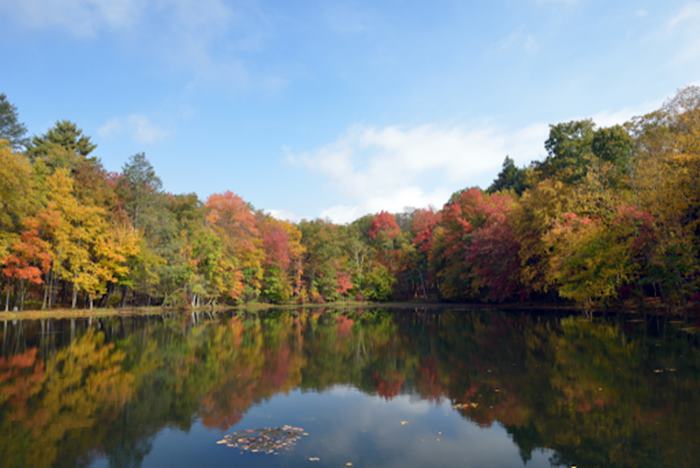
Understanding Different Bass Species and Their Preferences
When it comes to bass angling, it’s crucial to understand the different types of bass and their preferences. The two most common species you’ll encounter are smallmouth and largemouth bass. Largemouth bass are often found in lakes with abundant greenery and prefer slower-moving water. On the other hand, smallmouth bass thrive in cliff areas with clear water and faster currents. Knowing the preferences of each species will help you choose the right lake for your bass-angling adventure.
Researching Popular Bass Fishing Lakes in the US
To find the best bass-angling lakes in the USA, it’s essential to do thorough research. Lists of the best lakes for bass angling are provided by several reputable resources, including this article. Take the time to explore these resources and gather information about the lakes that catch your interest.
Evaluating Factors for Lake Selection
When selecting a bass-angling lake, various factors come into play. Consider the lake’s size, depth, and water clarity. Larger lakes often provide more room for bass to roam and offer diverse fishing opportunities. Pay attention to the lake’s spots, such as submerged rocks, fallen trees, or underwater greenery, as these are attractive spots for bass to hide and feed. Additionally, accessibility and amenities like boat ramps and fishing piers should be taken into account to ensure a convenient and enjoyable fishing experience.
Considering Local Regulations and Accessibilities
Before planning your bass angling trip, make sure to familiarize yourself with the local regulations and accessibilities of the lakes you’re interested in. Fishing regulations may vary from lake to lake, including catch limits, size restrictions, and specific rules for certain areas. It’s crucial to abide by these regulations to protect the bass population and maintain the sustainability of the sport. Additionally, consider the ease of access to the lake, parking availability, and any fees or permits required for fishing. These factors will help ensure a smooth and hassle-free experience.
Choosing the Right Bass Fishing Rods and Gear
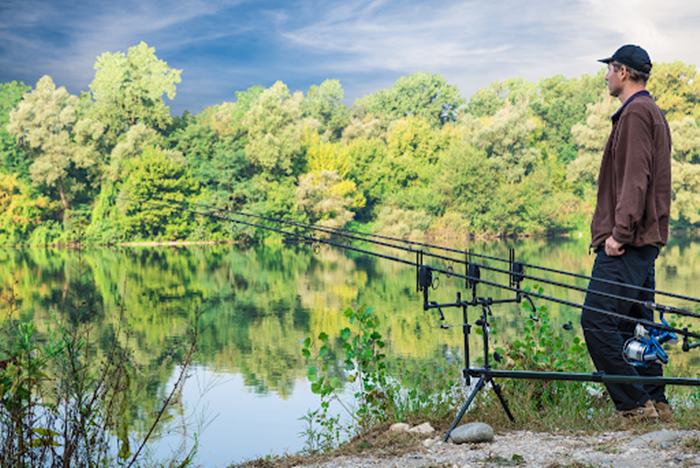
Rod Selection Guide: Finding the Perfect Bass Fishing Rod
The first step in choosing the right bass angling rod is to consider the type of fishing you’ll be doing. Different rods are designed for specific techniques, such as throwing, flipping, or finesse fishing. It’s important to match your rod to your preferred fishing style to maximize your success on the water.
For throwing and retrieving techniques, a medium to medium-heavy power rod is recommended. This will provide the necessary strength and sensitivity to handle bass and other types commonly found in American lakes. On the other hand, if you prefer finesse fishing or targeting smaller bass, a lighter rod with a fast action may be more suitable.
Read more: Fishing on Lake Simcoe Guide: Spots, Licenses, Tips – Ontario
Reel Options for Bass Fishing: Choosing the Right Type
Once you’ve selected the perfect rod, it’s time to choose a spool that complements your fishing style. There are several types of spools including baitcasting spools, spinning spools, and spin-cast spools.
Baitcasting spools offer precise control and are ideal for throwing accuracy and power. They require some practice to master, but once you get the hang of it, you’ll appreciate the versatility they provide. Spinning spools, on the other hand, are easy to use and work well for various fishing techniques. They are especially popular among beginners and fishers who prefer finesse fishing.
Essential Gear for Bass Angling: Tackle, Baits and Accessories
In addition to your rod and reel, there are a few essential gear items you’ll need for a successful bass angling trip. Tackle boxes are a must-have to organize your lures, hooks, and other fishing accessories. Look for a tackle box with adjustable compartments to accommodate different-sized attractants.
Speaking of attractants, there are countless options available, each with its own unique characteristics and applications. Some popular choices for bass angling include plastic worms, crankbaits, spinnerbaits, and topwater lures. Experimenting with different attractants will help you determine what works best for the specific conditions and bass behavior in your favorite fishing spots.
Maintenance and Care: Keeping Your Bass Fishing Gear in Top Shape
To ensure the longevity of your bass angling gear, proper maintenance and care are essential. After each fishing trip, make it a habit to clean your rods and reels with fresh water to remove any dirt or debris. Lubricate the reels regularly to keep them running smoothly and prevent corrosion.
Inspect your fishing line regularly for signs of wear and replace it as needed. The damaged line can lead to lost fish and frustration on the water. Additionally, check your hooks for sharpness and replace them if necessary. Dull hooks can result in missed strikes and lost opportunities.
Concluding Remarks
If you’re an avid angler looking for the ultimate thrill of catching big bass, then you need to explore the 15 best bass angling lakes in the US. These lakes offer the perfect fishery for trophy bass and provide an unforgettable experience for any fishers.
Imagine yourself throwing your line into the calm waters of a picturesque lake, surrounded by lush greenery and wildlife. With each rig and kayak adventure, you’re in pursuit of that elusive trophy bass that will make your heart skip a beat. These legendary lakes are known for producing large bass, and you won’t be disappointed.
Whether you’re a seasoned angler or a beginner, these lakes offer something for everyone. From the steelhead-filled waters of Ohio to the little less crowded lakes in California, each destination has its own unique charm. You can choose to fish from the bank or venture out in a boat, enjoying the scenic views and the thrill of the catch.
So pack your gear, plan your vacation, and get ready for an unforgettable bass-angling adventure. These 15 best bass-angling lakes in the US are waiting for you to explore their waters and create memories that will last a lifetime.
Remember, fishing is not just about the catch; it’s about the experience. With these lakes, you’ll have the opportunity to immerse yourself in the beauty of nature while pursuing your passion for bass angling.
Happy fishing!
FAQs
Q: What types of fish can I catch while lake fishing?
A: While lake fishing, you can catch a variety of fish types, including catfish, walleye, steelhead, and more.
Q: Are bass fishing lakes in the US good for catching bigger fish?
A: Yes, bass-angling lakes in the US are known for offering opportunities to catch bigger fish, especially in states like Texas.
Q: What are some effective fishing techniques for lake fishing?
A: When lake fishing, techniques like crankbait fishing and using jerk baits can be quite effective in attracting fish.
Q: Can I catch bass in every lake in the US?
A: While bass can be found in many lakes across the US, it’s important to research and choose the best locations known for their bass population.
Q: What are some factors to consider when choosing a lake for bass angling?
A: Factors such as the presence of grass, structure and vegetation in the lake, as well as calmer and shallower waters, can contribute to a better bass angling experience.
Q: Are there any specific lakes renowned for bass angling in the US?
A: Yes, there are several well-known bass angling lakes in the US, offering excellent opportunities to catch trophy-sized smallmouth and largemouth bass.
Q: Is it important to follow regulations when fishing in these lakes?
A: Absolutely. It’s crucial to be aware of and comply with the fishing regulations and size limits set for each lake to ensure the sustainability of the fish population.
Q: What are some recommended techniques for catching big bass in lakes?
A: Techniques such as throwing near cliff areas, using appropriate attractants and understanding the underwater structure can increase your chances of catching big bass.
Q: How can I find the best fishing destinations in the US?
A: Researching and consulting reliable sources, including fishing guides and local angler communities, can help you discover the best fishing lakes and destinations in the US.
Q: What is the average size of lakes suitable for bass angling?
A: bass angling lakes can vary in size, ranging from smaller fishing spots to larger lakes spanning hundreds or even thousands of acres.

